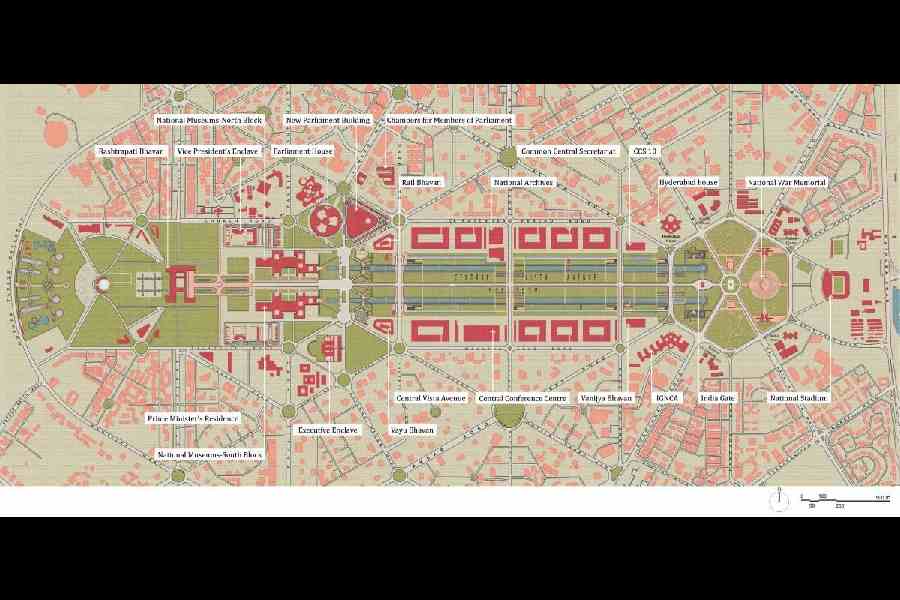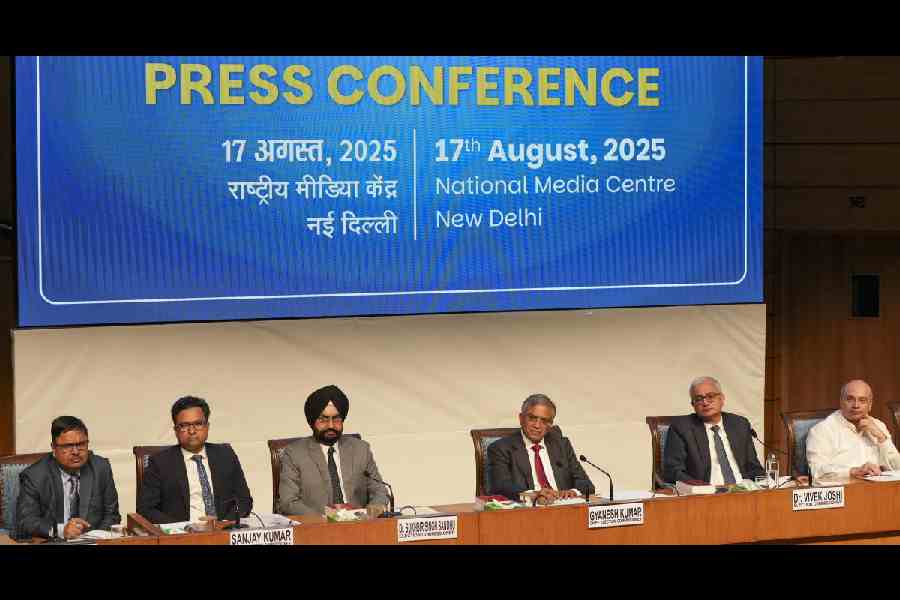 |
 |
 |
 |
| (From top): Tetsuma’s interiors reflect the earthy overtones and Zen-like feel of Japan; one of the highlights at threesixty° is its eye-catching ceiling; Wasabe’s timber-worked ceiling was developed from a traditional Japanese basket weave; Chef Augusto at threesixty° |
Are the Japanese invading India? Have minimalist decor and muted palettes replaced our love affair with faux nineteenth century European furnishings? Will it now be de rigueur to casually drop words like ‘omakase’ and ‘kaiseki’ in cocktail party conversations?
It would seem so, if new restaurant and bar openings in cities like Delhi and Mumbai are any indication. Indeed, witness a spate of restaurants opening in cities like Delhi and Mumbai that, if not always exclusively Japanese, evoke the nation’s sleek, modern and yet curiously nature-oriented feel. And when the most expensive real estate in the country — south Mumbai — hosts two new spaces, Tetsuma and Shiro, that pay homage to Japanese-inspired aesthetics, there’s clearly something bigger that’s going on.
Tetsuma and Shiro showcase how minimalist decor can be long on sophistication while short on clutter. Their cool, muted design aesthetic, one that places emphasis on simplicity of layout and detail, appears to be the new ‘in thing’ in urban India.
Already widely trendy in cities like London, LA and New York, which have witnessed a spate of Japanese mega-restaurant openings in the past year alone (think upwards of a 200-person seating), it was only a matter of time before India imported this trend.
In Delhi, the Oberoi Hotel transformed its ground floor space, formerly home to a French restaurant, into threesixty°, a Japan-inspired restaurant, and in Mumbai, the hotel renovated its lobby to house Tiffin, which, while not totally Japanese, evokes the clean lines and modern feel of that nation. Delhi is also home to Sakura, the Japanese restaurant at Hotel Nikko, which offers kaiseki ryori cuisine consisting of a small number of dishes.
The Taj in Mumbai has the uber expensive but nonetheless successful Wasabe. Wink, which opened at the Taj President earlier this year, is a Japanese inspired bar meant to “keep up with the speed and trend of what’s happening in the market,” according to Mirko Cattini, the bar manager. And while five-star hotels with their deep pockets can take a risk with cuisine experimentation and cool design, it’s the sudden surge in stand-alone establishments offering Japanese cuisine in brilliant surroundings that is all the more compelling.
 |
 |
| A sashimi delicacy from threesixty°; (top) a hostess prepares a platter at Hotel Nikko’s Sakura |
Tetsuma, (or tornado) was opened at the end of September by Vikrant Chougule and Aditya Kilachand, the same duo behind the ultra-hip, nightclub Prive, because both loved Japanese cuisine. “There is a growing global trend of people veering towards modern Japanese cuisine,” says Kilachand.
To that end, Chougule felt that the design element had to complement not only the food experience but also reflect the earthy overtones and Zen-like feel of the country. “We thought, what if it’s not in Mumbai? Will it work in a place like London in terms of design and food? The restaurant had to match those expectations,” says Chougule.
Designed by Pronit Nath, the decor skilfully intersperses ancient design concepts with contemporary touches. An island bar near the entrance is sleek enough to be at home in Tokyo or London. Removable water bodies are placed strategically throughout the restaurant and the stone flooring, movable etched glass and wood-rimmed screens are clever ways of playing with space-allowing for larger or smaller tables, as well as enabling diners to control their privacy. “We used as many natural elements as we could, instead of modern, funky stuff. We felt that Tetsuma shouldn’t be a fashionable restaurant, it should be timeless,” says Chougule.
He adds, “In London, there’s nothing in terms of design that comes close to Tetsuma. The new cool restaurants in London are not innovative in terms of design. We sourced everything locally. India is the best place to source stuff that’s earthy looking and because we designed a modern Japanese restaurant, it didn’t need to have all the traditional elements that a typical Japanese restaurant has.”
 |
| A sushi speciality from Hotel Nikko’s Sakura |
Shiro, a restaurant-cum-bar in the Bombay Dyeing mill compound in Worli, transports you from the grimy clutter of Mumbai to a world of high ceilings, a giant stone statue of South-East Asian origin, swaying bamboo and lanterns.
Does it feel vaguely like Buddha Bar in Paris or Tao in New York? Well, er, yes, but Shiro is so well designed and well, so enormous, that one can only speculate as to what other vast swathes of space are hidden from public view right in the heart of the city.
We’re talking 50ft high ceilings and about 10,000 sq ft of space. Similar to Tetsuma, water bodies abound. While it may be a coincidence that both establishments opened around the same time, it’s a testimony to how sexy Japanese cuisine and its accompanying vibe has become that Mumbai has about 10 stand-alone Japanese- inspired restaurants.
Credit for this onslaught of chic, up-to-the-minute design with the spectacle of live kitchens and bar dining undoubtedly goes to threesixty°, the Delhi Oberoi’s self- described ‘world cuisine’ restaurant. “We wanted to have a chic, modern look so that the restaurant could be in any part of the world, and our inspiration came from cities like Shanghai, Singapore, Dubai. We wanted to create a space where you couldn’t predict what you were eating,” says Abhishek Sharma, the Assistant F& B Manager of the restaurant.
He adds, “India lacked a Japanese restaurant that was accessible to a wide range of diners. There’s Sakura at Hotel Nikko, but that’s so tightly wound that it shuts by 10:30pm and it is too authentic for a lot of diners to go there.”
Given Sharma’s point about Indian diners’ lack of culinary adventurism, why have so many new restaurants and bars embraced Japanese food? After all, the average Indian probably equates Japanese cuisine with raw fish, and that can often be a lethal combination in a country not known for great food storage facilities.
However, Japanese food is probably the only Asian cuisine that places so much emphasis on presentation. That sits well with restaurant and bar owners looking to present the best and most up-to-date design elements that the increasingly discerning, high net-worth Indian craves.
So while there are some uniquely Indian touches, including offerings of extensive vegetarian selections and the separation of the yakitori grills into vegetarian and meat sections, the focus on creating a superior design aesthetic is common to all these Japanified establishments.
For example, threesixty° isn’t exclusively about Japan, offering as it does a live sushi bar and a yakitori grill along with tandoori cuisine and pasta. While it offers a range of world cuisine, in terms of design, one of the restaurant’s highlights is the ceiling, from which is suspended aluminium rods finished off with wooden paint to resemble the wooden floor and the use of natural and mostly indigenous materials, including the large quantities of Nimbahera stone from Jharkhand.
Both Wasabe and Wink have noteworthy ceilings as well. According to Cattini, Wink is the “only bar in India to hang suspended from the ceiling.” At Wasabe, the design of the timber worked ceiling was developed from a traditional Japanese basket weave. This ceiling detail lends visual warmth to the space, in contrast to the visual coolness of the floor, according to David Winter, the designer.
Actually, at Wasabe, the cuisine was developed following the design. Winter describes the restaurant as a “theatrical Japanese interior,” which intentionally lacks ornamentation in keeping with the simplicity of design and layout.
 |
 |
| A sushi preparation from threesixty°; (above) a platter from Sakura |
Sakura at the Hotel Nikko, arguably the first Japanese restaurant in India, is decorated in a contemporary Japanese manner, which the hotel describes as “creating a visual effect of serenity and relaxation.” Window blinds were deliberately designed to resemble tatami mats, traditional Japanese chatais common to most houses. The stone floor and the colour found on the walls evoke soothing, natural elements that draw inspiration from the earth. The light wood furniture gives the space a current and light look, but also maintains the balance between tradition and modernity.
All this attention to design detail is relatively new in India’s dining out culture. And in keeping with India’s trend of looking more outwards, many of the restaurants and bars in question have relied on international firms to design the interiors. The Oberoi drew upon Virgile and Stone, an Italian design company based in the UK. Wink used the Singapore based Japanese firm Super Potato, which has to its list of credits the highly successful London restaurants Hakasan and Zuma. Wasabe employed LTW Design Works, also based in the UK, and Pronit Nath, Tetsuma’s designer, while based in India, was educated and trained in the UK.
Happily enough, the Indian diner’s eating out experience has been considerably enhanced by this fusion of an eastern design aesthetic with a western innovative sensibility. And while dining in these new design temples doesn’t come cheap, it is a small price to pay to escape the urban sprawl and chaos that greet you upon your exit.
Photographs of Sakura and threesixty° by Jagan Negi










